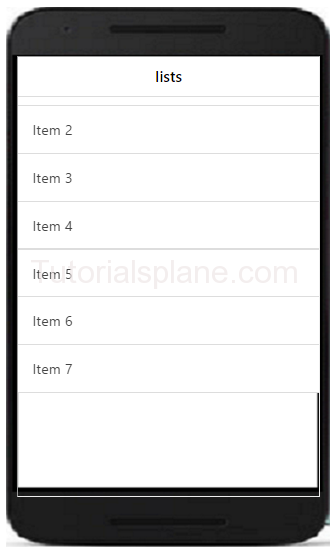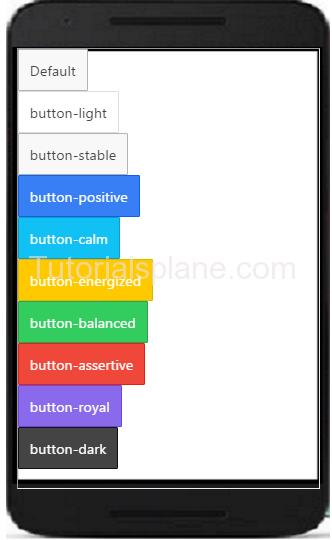Ionic Listing is one of the strongest features of this framework
with drag to reorder, editing, swipe to edit and pull to refresh can be
introduced inside these coding structure with the use ionic directives only. Displaying
Ionic List in this
application framework requires you to follow some basic rules which involve using
specific classes for ‘ul’ and ‘li’ element in HTML 5 code with list and item
respectively. Applying the code will result in the below image directly as it
has default code for making things easier with just HTML5 basic layout skills.

For better organizing and grouping one can also add the List
dividers to specific ‘li’ for
making sure they have proper difference in the navigation structure with
respect to user behavior. This provides different color and font-weight to
that specific ‘li’ item from the rest displaying it as the parent and child. One
can also simply add icons to this Ionic list example with <i> tag only
using position item-icon-right for right and item-icon-left for left. You can
add these classes to their parent tag for ‘i’ element for regular behavior.
Item Avatar functionality is available too with images as
default round using border radius property. For displaying large thumbnails
inside ionic list there is default code with item-thumbnail which can be given
the position left or right specifically to match the requirements of the design
respectively. Using Inset Lists this whole structure is designed to avoid the
full-width layout structure as well to show better designing capabilities.
Start learning Ionic tutorials
with Tutorialsplane authentic guide especially for beginners, they are step by
step explaining the use of all the basic fundamental of this amazing Ionic Framework.
For freshman and newbie learners this is the place to start their mobile application
learning skills with easy examples, syntax and live demo for understanding the
depth of this mobile framework coding. Here you go through all the CSS
components and JavaScript Components for strengthen your core basic as well
Ionic FAQ that will prepare you for the complex situations in your career
ahead.
Source:- Making Ionic Lists

